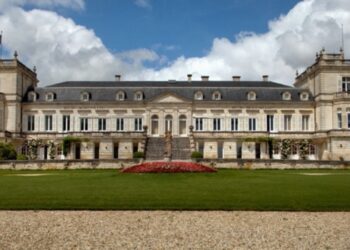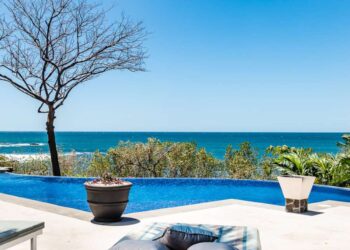Insiders know. Japan, eloquently coined the Land of the Rising Sun, is one of the most coveted ski destinations in the world. The reason? Snow. And lots of it. Japan receives double to quadruple (25 to 50 feet) the amount of snowfall seen in the American west (i.e. Washington, Colorado, Utah, Alaska), and holds the record for the deepest snow cover ever recorded — 465.4 inches (over 38 feet) was measured in 1927 in Honshu Island’s Mt. Ibuki. Often referred to as ‘Champagne powder,’ the snow (due to a weather pattern originating in Siberia) is uber deep, yet light, fluffy, and delicate. With its healing onsens (natural hot springs), stunning scenery, and fabulous food (sushi, tempura, tonkatsu, ramen, sake) — Japan offers an amenity-filled, postcard-perfect ski holiday. For a more Western feel, visit Hokkaido or for a more traditional Japanese immersion, opt for Nagano, home of the snow monkeys.
Hokkaido

The Vibe
Western in feel, English is widely spoken, and the stay is a mix of high-end chalets and name-brand luxury hotels (Ritz Carlton, Park Hyatt). This northernmost island, home to Mount Yotei, receives the most snowfall, and is known for its high-caliber ski resorts.
The Ski
Niseko, Hokkaido: Often called the ‘Aspen of Japan,’ Niseko is Japan’s most visited and developed resort, with 30 lifts and 4 interconnected ski mountains (Niseko Annupuri Ski Area, Niseko Village Ski Resort, Niseko Grand Hirafu Ski Resort, and Niseko Hanazono Ski Resort). Niseko is a fave among the millionaire set who come to ski discreetly under the radar, explore the untamed off-piste slopes, and relax in the natural hot springs.
Furano, Hokkaido: Located in the middle of Hokkaido, Furano Ski Resort is divided into two zones: Furano and Kitanomine, which are connected at the top of the mountain by a common trail. The resort offers nearly 500 skiable acres, 15 lifts, gondolas, long runs, and truly spectacular views — of the valley, volcano, and mountain peaks. Following a major snowfall, there is often untracked powder for days, making sidecountry and skiing among the trees quite popular here. Take a break from the slopes to visit Asahiyama Zoo (an hour away) and walk with giant penguins. The walk is actually real ‘exercise time’ for the penguins; visitors (said to look like mountains of snow and ice to the birds) line up along a route to watch the penguin parade.
Where to Stay In Niseko

Zaborin: Located outside of town, in the secluded Hanazono woods, this 15-villa boutique ryokan sits directly above the Zabo natural spring. Typically in Japan, bathing in an onsen is a communal experience. But at Zaborin, each villa, surrounded by white birch trees and named for the unusually delicate snow, comes with two completely private onsens, one is indoors, the other open air. Enjoy too the ryokan’s award-winning kita kaiseki cuisine — an interpretation of the traditional Kyoto kaiseki dining — celebrating local produce and seasons.
Higashiyama Niseko Village, a Ritz-Carlton Reserve: One of a small, elite collection of Ritz-Carlton Reserves (and the first in Japan), this stunning 50-room resort property rests at the base of Mount Niseko Annupuri, and includes natural elements (cherry-blossom motifs) in its design. The bathrooms are a standout with deep-soaking gray tubs that come with a view of Mount Yotei or ski slopes through floor-to-ceiling glass. The hotel also features two restaurants, a lounge, onsen, Sothys spa (where French beauty meets Japanese tradition) and a fitness center.
Setsu Niseko: Offering spectacular views of Mount Yotei and Mount Annupuri, Setsu Niseko is also home to one of the largest wellness facilities in Niseko. Think: four private onsen rooms, an onsen lounge, and cold plunge pool. A graceful curation of art (painting, sculpture, calligraphy, and photography) is on display throughout the hotel — celebrating Hokkaido’s incredible landscapes.
Where to Stay In Furano:
Mountain Daito: Home stays are a popular choice in Furano, which translates to ‘the sound of mountains.’
Nagano

The Vibe
Traditional Japanese, no crowds, lots of ryokans (classic inns), and easy proximity to Tokyo. Nagano is also the home of Japan’s famed macaques (snow monkeys), found at Jigokudani Monkey Park. During winter months — December to March — the snow monkeys are often found lounging in the healing hot springs.
The Ski
Nozawa Onsen Snow Resort: Just two hours from Tokyo, this mid-sized ski resort is home to 20 lifts, 2 gondolas, and 44 trails, Nozawa receives some of the most snowfall in Nagano and offers a diversity of terrain (tree tails, groomed runs, and moguls). But the resort town is most famous for its onsens (free public hot springs), dating back to the Samurai and still in use today. Note the misty steam rising dreamily along the village’s narrow cobblestone streets and traditional ryokan inns.
Where to Stay in Nozawaosen
Ryokan Sayaka: Family owned and operated for 17 generations (since the Edo Period), this classic ryokan features traditional Japanese architecture, gourmet meals, and natural hot springs known to revitalize skin and relieve achy joints and muscles. Rooms are traditional Japanese, with low tables and tatami mats.
Sumiyosiya Ryokan: Classic Japanese, in its wooden architecture, the guest rooms at this artful ryokan come with tatami mats, futon beds, and intricate art pieces. After a long day on the slopes, soak in the hotel’s ancient onsen baths, and then cozy up for an exquisite Japanese Kaiseki dinner.
Nozawa Grand Hotel: For a western option, head to one of Nozawa’s most established hotels. Here guests may choose on-floor futon or western-style bedding. The hotel also offers easy access to the ski runs, fantastic mountain views, and three natural onsen, including one that can be booked privately.
Mount Zao

The Vibe
Remote, tranquil, and bizarrely beautiful with its Suessical ‘snow monsters’ (which are nothing more than frozen trees), Mount Zao in the Tohoku region, is an off-the-beaten-path destination worthy of a visit. Harsh Siberian winds traveling across the North Japan sea and western plains of Yamagata, reportedly glaze the mountain’s indigenous fir trees with freezing condensation — creating the snow monster effect. At night, the “monsters” are lit up with twinkling lights, for an even more magical storybook setting.
The Ski
Zao Onsen Ski Resort: One of Japan’s oldest ski resorts, this Yamagata-based resort is also the largest in the Tohoku region. The resort offers over 30 lifts, gondolas, and ropeways. The longest course starts near the snow monsters at the summit of the mountain and is about ten miles long.
Where to Stay in Mount Zao
Chikusen Mount Zao Onsen Resort & Spa: Located at the foot of Mount Zao, this elegant ryokan is surrounded by a lush forest, streams, and rivers. Rooms come with traditional wooden tubs, while suites offer private onsen on covered outdoor terraces. Dine at Kamajin at Chikusenso (the on-site restaurant) serving Kaiseki-ryori, a traditional multi-course Japanese dinner.
Featured image by Zion C via Unsplash







